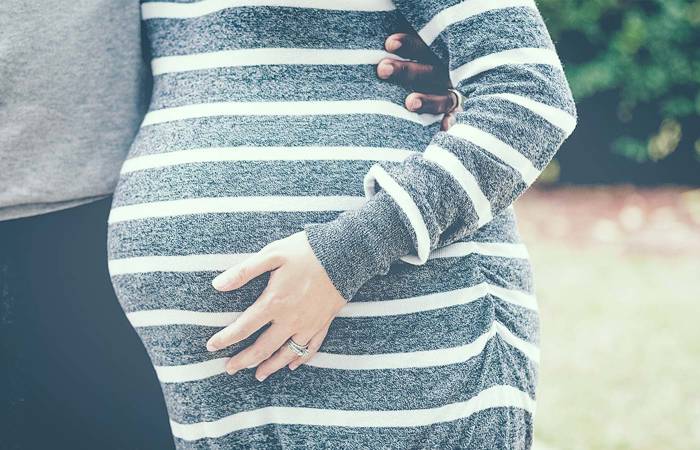Like what you see?
Sign up to receive more free parenting advice.
Thank you for subscribing to our newsletter!
Child Development

Credit: iStock.com/sturti
A study from the Murdoch Children’s Research Institute has found that midwives could be the key to increasing the uptake of maternal and childhood vaccines, but due to a lack of training, do not feel equipped to communicate the safety and effectiveness of vaccines to expectant parents.
“The study identified that midwives see discussing maternal vaccination as important and part of their role,” says study author Associate Professor Margie Danchin, Department of Paediatrics at University of Melbourne and Paediatrician at the Department of Medicine at the Royal Children’s Hospital.
“They want to stress the two for one benefit of protecting both the mother and infant to expectant mothers, especially for the maternal influenza vaccine.
“The study recognised that maternal vaccination coverage is lower than we would like it to be for both the influenza vaccine and the whooping cough vaccine.”
The influenza vaccine is recommended throughout pregnancy while the pertussis (whooping cough) vaccine is now recommended from 20 weeks gestation and optimally given between 28 and 32 weeks.
New maternal vaccines for respiratory syncytial virus and group B strep are also in the pipeline and are expected to be offered to pregnant woman in the future, bringing to four the number of vaccines offered during pregnancy.
Stay up to date with the latest news and articles from First Five Years
Thank you for subscribing to our newsletter!
Associate Professor Danchin says it is therefore important that pregnant women can access reliable information on maternal vaccines and be able to get the facts on the effectiveness and safety of them
“The study’s aim is really around developing strategies to improve maternal vaccine uptake and focusing on midwives in the public antenatal care setting,” she says.
“In previous research, we identified midwives as being amongst one of the most highly trusted health care providers by women within the public antenatal hospital system1.
“Midwives want to find the time to talk to expectant mothers about maternal vaccinations, as well as, childhood vaccinations.
“Like obstetricians, midwives also have many demands on their time and so they are keen to learn ways to have these conversations effectively and more efficiently.”
Where do midwives come in?
Associate Professor Danchin explains that the midwife’s model of care is different to a purely medical approach.
“Midwives use a woman-centred approach, value more of a partnership approach with the mother and don’t want to appear that they are pushing decisions onto women,” she says.
“Some midwives feel more comfortable saying that ‘the hospital recommends’, or ‘it is recommended that’, rather than ‘I recommend’.”
She adds that pregnancy is a key vaccine decision point.
“Women need to be discussing and considering maternal vaccines from early on in pregnancy,” she says.
“As for childhood vaccinations, we know that during pregnancy is when women start to think about vaccinations for their unborn child.
“Providing them with trusted, accurate, positive information in pregnancy is crucial to building sustained vaccine confidence and trust in vaccines.
“When they need to make the decision, first at birth with the first Hepatitis B vaccine and then at six weeks with the first series of infant vaccines, we want them to feel much more equipped with the knowledge around vaccination effectiveness and safety that many women are now asking for.”
In a 2017 study, Associate Professor Danchin found that only 66 per cent of mothers reported receiving enough information during pregnancy on childhood vaccination.
They also found that “46 per cent and 82 per cent of mothers reported receiving pregnancy influenza and pertussis vaccines respectively” during their pregnancies.
Associate Professor Danchin says that “a large proportion of women accept vaccines without asking a lot of questions, however, there is a growing group of women and their partners who want to be reassured that the vaccines are safe and effective, as well as, facts on the severity of the disease the vaccines are working against”.
“Women are saying that they can’t easily find the information they are looking for and midwives are saying they are not always sure on how to communicate those facts simply and efficiently given the constraints on their time.”
Vaccine statistics in Australia
The Australian Department of Health says that in 2012, around one in four pregnant women were immunised against influenza.
Associate Professor Danchin says that today, “the vaccine uptake for influenza in pregnancy varies extremely widely across Australia and is around 30 per cent to 50 per cent”.
“I think women don’t understand the benefits of the flu vaccine for themselves while pregnant or for their infant which is one of the reasons why the uptake is so low.
“We need to communicate the safety and effectiveness of the flu vaccine clearly to pregnant women, but we also need to make it easier for them to get a vaccine.
“Ideally all antenatal care settings would offer vaccination on site.”
The recommendation for the pertussis vaccine for pregnant women started in 2015 and today the uptake rates are reasonably high, she says.
“Whooping cough vaccine uptake is higher than for influenza and is around 82%, although it varies by state.”
Maternal vaccines aren’t only there to protect the mother, their benefits extend to the unborn infant.
“As health care providers we really need to be reassuring women that maternal vaccinations are the best way to protect their infant in the first few months of life,” she says.
Associate Professor Danchin says that the influenza vaccine is 60 per cent protective against the infant getting the flu in the first six months of their life, and 90 per cent effective in preventing that infant, should they get the flu, from requiring hospital admission, in other words it reduces the severity of the flu.
As for the whooping cough vaccine, it is 91 per cent protective against the infant getting whooping cough in the first three to six months of their life.
In two recent studies2, researchers looked at what factors determined Western Australian pregnant women from getting the influenza vaccine.
They both found that “the antenatal care provider's advice to have the influenza vaccine was the most important factor associated with vaccination”, while “the most common reason for being unimmunised was the lack of a healthcare provider recommendation”.
Antenatal vaccine communication intervention package
The study findings will be used to develop the first antenatal vaccine communication intervention package in Australia for midwives.
“We are working very closely with Dr Saad B. Omer, who is the Professor of Global Health, Epidemiology, and Paediatrics at Emory University’s Schools of Public Health, and we have developed a multi-component strategy targeted at midwives,” says Associate Professor Danchin.
“This model includes parent and provider reminders, training to improve provider communication and encourage vaccine recommendation, and parent information resources addressing vaccine benefits and disease severity. We also want to emphasise to providers how important it is to offer vaccines on site for pregnant women if possible.
“The message is by building a multicomponent strategy and embedding it into antenatal care, we think this is the best way to improve vaccine uptake, particularly maternal vaccine uptake.
“It is as important how you give a message to a pregnant woman as what you have to say.”
[1] Vaccine decision-making begins in pregnancy: Correlation between vaccine concerns, intentions and maternal vaccination with subsequent childhood vaccine uptake, 2018, https://www.ncbi.nlm.nih.gov/pubmed/28811050
[2] Trends in seasonal influenza vaccine uptake during pregnancy in Western Australia: Implications for midwives, 2016, https://www.sciencedirect.com/science/article/pii/S1871519216000330?via%3Dihub and Antenatal care provider's advice is the key determinant of influenza vaccination uptake in pregnant women, 2014, https://obgyn.onlinelibrary.wiley.com/doi/abs/10.1111/ajo.12292
Australian Childhood Immunisation
At March 2019, the Australian Department of Health says the national coverage rates for the recommended childhood vaccinations were:
- 94.14% for all one-year olds
- 91.15% for all two-year olds
- 94.78% for all five-year olds
However, vaccination rates vary widely depending on locality.







